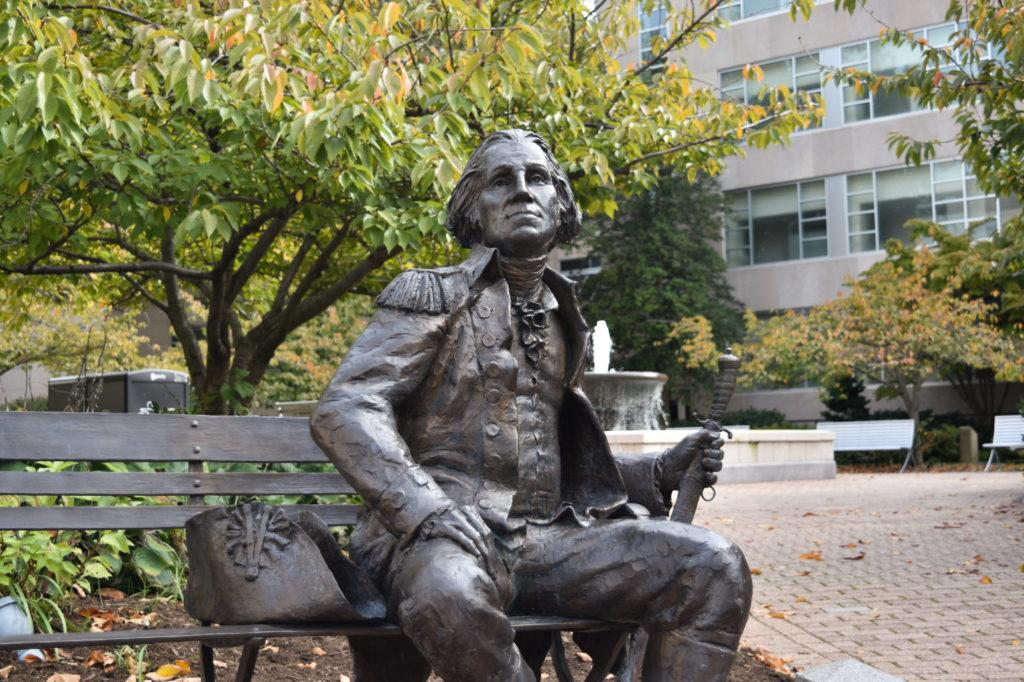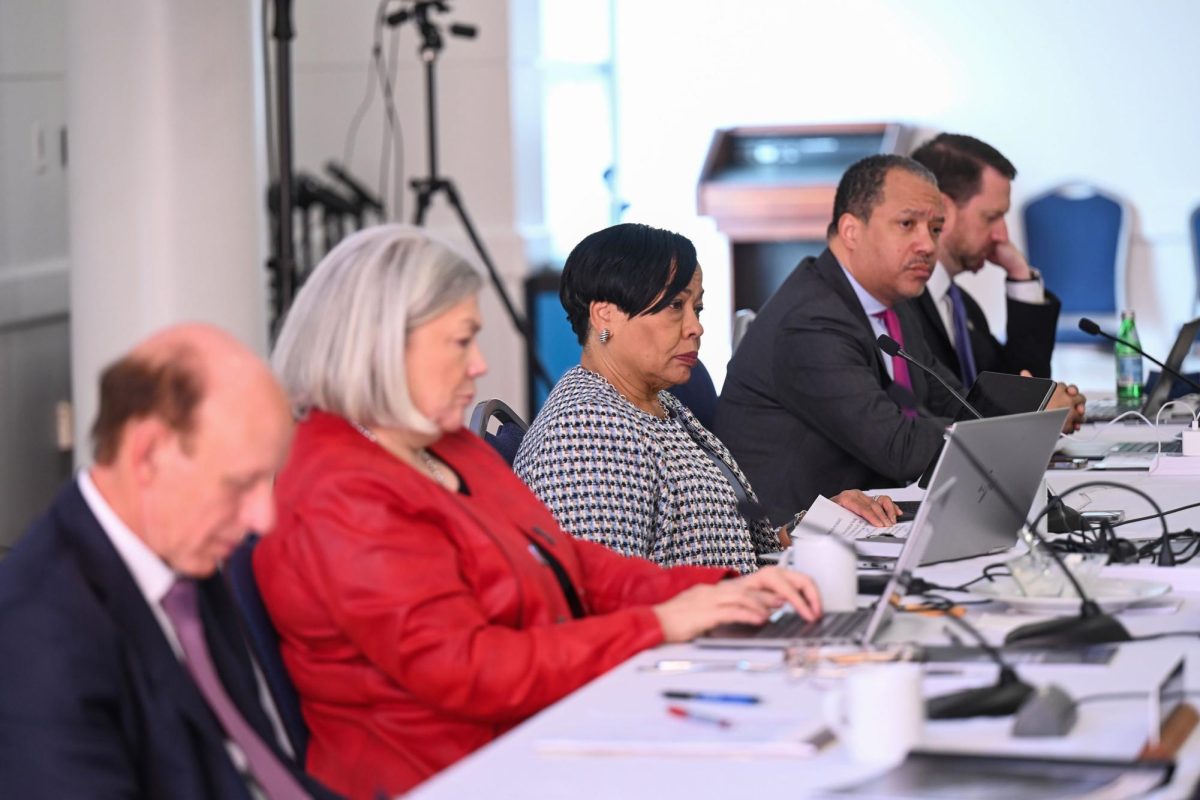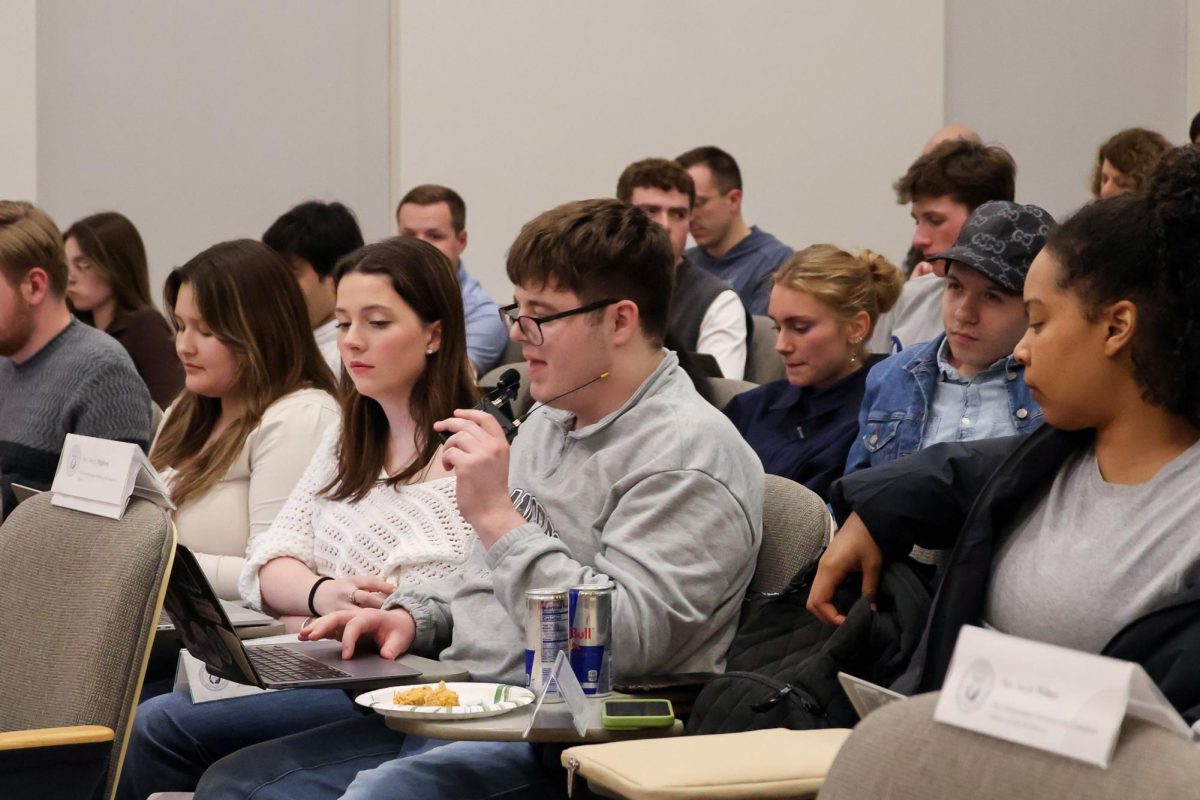Officials laid off dozens of communications and marketing professionals in recent weeks – a reshuffle proposed before the pandemic began to affect GW’s operations – according to internal emails and employees familiar with the matter.
Sarah Baldassaro, the interim vice president for communications and marketing, said officials made “difficult decisions,” including layoffs alongside plans to centralize the division. Officials said they are reorganizing administrative units to close GW’s annual revenue shortfall amid the pandemic, but an outside consulting group that officials hired before the health crisis already recommended the move in February, according to documents obtained by The Hatchet.
It remains unclear the exact number of staff laid off in recent weeks, but officials have eliminated dozens of positions starting early this fall, according to three employees familiar with the changes who spoke under the condition of anonymity for fear of retribution from the University. Baldassaro declined to say how many employees were laid off as part of the restructuring.
“We will not discuss individual personnel decisions further out of respect for valued colleagues who have been affected by this process,” she said in an email.
The reductions included three media relations staff, according to their LinkedIn and Twitter profiles.
Baldassaro held a town hall with employees in the division on Sept. 23 to discuss the reductions, according to an email obtained by The Hatchet.
The next day, officials released 39 consolidated job postings for laid-off staff to apply for by Sept. 27, two employees told The Hatchet. Baldassaro told staff that officials were still working with Human Resources to finalize the layoffs on Oct. 7, according to a separate email sent to employees.
But before the pandemic, an effort was already underway to reorganize GW’s communications and marketing departments.
SimpsonScarborough, a higher education marketing firm, advised officials to transition the existing Division for External Relations and related units to a centralized Office of Communications and Marketing to “streamline” the unit and reduce staffing “redundancies,” according to a draft report created in February. The firm called GW’s existing communications and marketing structure “dysfunctional, inefficient and suboptimal,” the documents state.
“It is problematic that there are more communicators and marketers outside versus inside the central unit,” SimpsonScarborough wrote in the draft report, which was marked confidential. “This increases cost and decreases effectiveness and integration of the communications and marketing effort overall.”
[pdf-embedder url=”https://www.gwhatchet.com/wp-content/uploads/2020/10/GW-Assessment-Report-Feb-2020.pdf” title=”GW Assessment Report Feb 2020″]
Baldassaro confirmed SimpsonScarborough’s assessment of the division, adding that the firm began its work in fall 2019 and was scheduled to present recommendations in March as the pandemic began to affect GW’s operations. She declined to provide a copy of the report.
“They reviewed the overall communications and marketing structure at GW at a very high level and recommended that the University consider a center-led model, with communications and marketing positions University-wide reporting centrally,” Baldassaro said. “This recommendation has been adopted, with the objective of promoting an integrated marketing and communications approach and fostering greater collaboration and coordination.”
University President Thomas LeBlanc commissioned the review last fall, according to two employees familiar with the assessment. Baldassaro declined to comment on LeBlanc’s involvement in the assessment.
She added that officials paused SimpsonScarborough’s efforts in light of the pandemic, but the recommendations were considered during the reorganization. She said the reorganization began “in earnest” when Lorraine Voles, who served as the vice president of external relations, resigned at the end of June to restart her consulting business.
Administrators hired Heather Swain as the inaugural vice president for communications and marketing in August to “streamline” and “drive efficiencies” in the division, but Swain rescinded her offer following widespread criticism over her role in the Larry Nassar sexual abuse case. Baldassaro, who serves in the role in an interim capacity, said the title reflects the newly created structure.
“The recruitment of a vice president for communications and marketing was intended as a back-fill of the previous vice president position, with the title changing to reflect the intended organizational evolution from External Relations to Communications and Marketing,” she said.
Baldassaro added the Events & Venues division – which laid off dozens of staff this summer – now reports to the Division of Safety and Facilities, while the Office of Government and Community Relations is now part of the Office of the President – both changes based on SimpsonScarborough’s recommendations.
She added that officials are still completing the reorganization process, which creates a communications and marketing team focused on four key areas: academic reputation, enrollment, research and alumni engagement and philanthropy.
“I am looking forward to working closely with deans and key leaders as we implement this aligned and holistic approach to communications and marketing and to serving as a strategic partner as we work together to advance the University’s academic mission,” Baldassaro said.
LeBlanc had said officials would complete the first phase of budget cuts, which include an administrative reshuffle, by the end of September.
The layoffs have also included dozens of employees in IT offices, the Center for Career Services and facilities and event departments.








